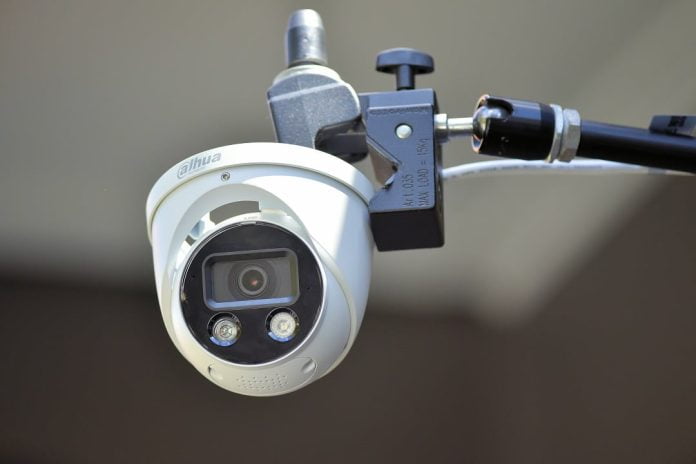Dahua TiOC Turret Camera Review
♦ SEN’s Dahua TiOC turret camera review explores performance of this compact, robust camera during day and night, with particular attention paid to faces, plates and the performance of the cameras automated alarm functions.
Dahua’s TiOC 8MP turret camera combines integrated white light, IR, speaker, siren and LED warning lights, with these active deterrent mechanisms driven by Dahua’s IVA. In our review we manage the camera and its IVA functions through the Dahua camera browser.
Dahua’s TiOC DH-IPC-HDW3849HP-AS-PV-0280B-S3 day/night turret camera features solid specifications with its 4K resolution supported by a ½.8-inch CMOS sensor, a fixed, magnesium fluoride-coated, F1.0 2.8mm lens (there’s a 3.6mm option), and IP67 ratings against water and dust, while on the IVA side, WizSense detection and monitoring of vehicles and humans using area motion detection or tripwire.
Importantly from the point of processing, WizSense is driven by a dedicated AI chip and deep learning algorithm, offering high accuracy of object categorisation that can be used to alert managers or operators, while allowing proactive response to be automated or driven in real time.
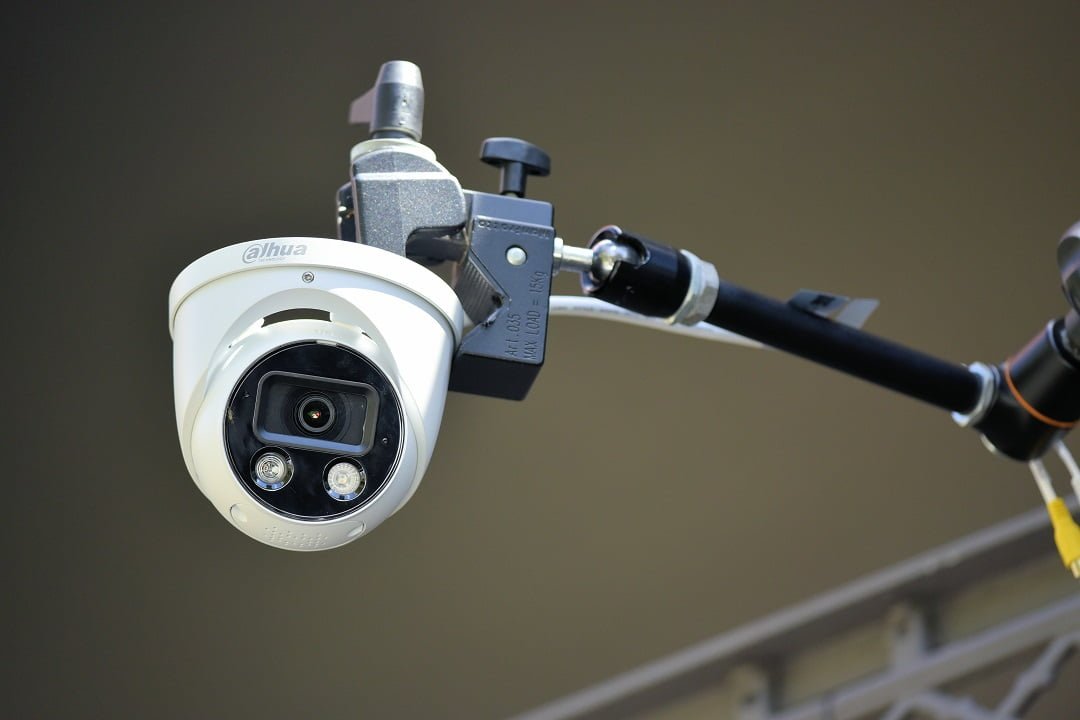
Before we look at camera performance, let’s run through the specifications. For a start, the camera has an 8MP ½.8-inch CMOS sensor, integrated 30m white and IR light arrays, ROI, and SMART H.264+/H.265+, AI H.264/H.265, flexible coding.
There’s rotation mode, WDR, 3D NR, HLC, BLC, and digital watermarking, while the intelligent monitoring functions include intrusion, tripwire (vehicles and people). Abnormality detection includes motion detection, privacy masking, scene network disconnection, IP conflict, illegal access, and voltage detection.
Other features include an alarm in/out, an audio in/out, 256GB SD card support, integrated microphone, 12 VDC/PoE power supply, IP67 ratings against water and dust, SMD 3.0 and 1-press arming/disarming through the alarm input.
Claimed minimum scene illumination is 0.004 lux at F1.0 in colour and 0.0004 lux in monochrome – these numbers are a stretch for operation with moving subjects as they’d require the slowest possible shutter speeds. The camera has integrated IR and white light support, but we found colour performance under 2 lux on the street unsupported to be a strong point.

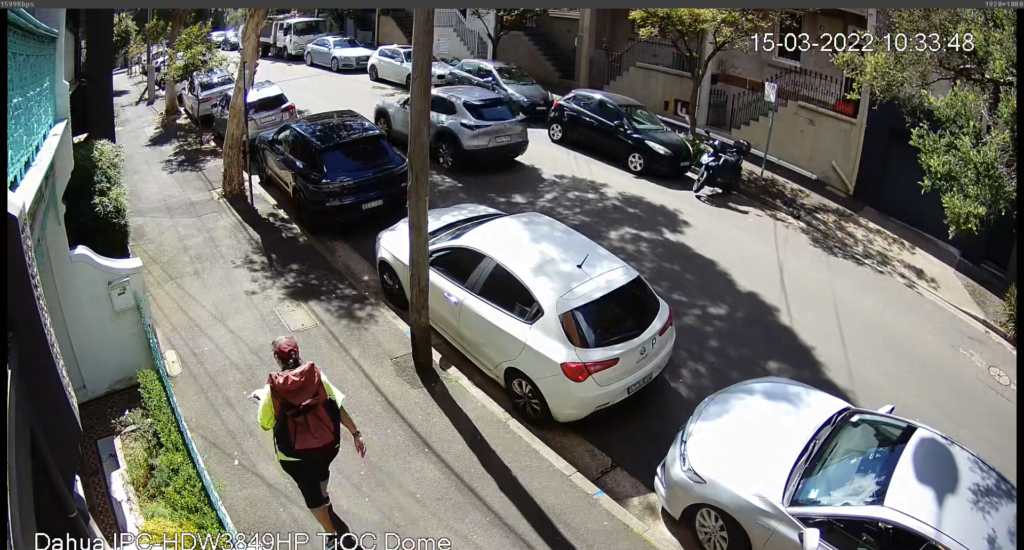
The camera’s horizontal angle of view is 106 degrees, the vertical angle is 55 degrees, with 0-360 degree panning range and 0-78 degrees of tilt. DORI numbers are 9.1 to identify, 18.2m to recognize, 36.2m to observe, signal to noise ratio is 56dB and wide dynamic range is 120dB.
The camera has smart illumination, defog, backlight compensation, highlight correction, scene self-adaptation, auto and manual gain control, 3D noise reduction, 8 privacy masks, 4 areas of motion detection and 4 regions of interest. Audio compression options include G.711a, G.711Mu, G.726 and G.723.
Programmable alarm events include no SD card, SD card full, SD card error, network disconnection, IP conflict, illegal access, motion detection, video tampering, tripwire, intrusion, scene changing, audio detection, voltage detection, external alarm, SMD, and security exception.
Cyber security functions include video encryption, firmware encryption, configuration encryption, Digest, WSSE, account lockout, security logs, IP/MAC filtering, generation and importing of X.509 certification, syslog, HTTPS, 802.1x, trusted boot, trusted execution, and trusted upgrade.
Power supply is 12V DC/PoE (802.3af) with typical consumption of 2.9W (12 VDC) and 5W (PoE) and a maximum of 7.8W (12V DC) and 9.6W (PoE) with lights on and H.265+ main compression activated.
The camera has an operating temperature of -40 to 60C, is robustly constructed of cast alloy to an IP67 submersible rating, has dimensions of 110.9 mm x 122.0 mm and weighs 745g.
Test Driving Dahua TiOC
I undertake our Dahua TiOC turret camera review on SEN’s 1Gb test network using a NetGear PoE switch and a Dell Optiplex 9080 server. There’s a stack of other cameras in the office queued up for testing, thanks to Sydney’s endless rain, but there are none on the network for our test.
As well as looking at camera performance, I’m interested in ease of setup and the capability of this camera’s active deterrence features, which are designed to allow a proactive automated response to be actioned in the event of motion detection or tripwire crossing by people or vehicles.
The 8MP TiOC turret has Dahua Smart Dual Illuminator technology, which uses a smart motion detection algorithm to filter and detect targets. For instance, in day/night mode the camera would be in monochrome mode with its IR illuminator activated at night. When a target appears in angle of view, the warm light activates, and the camera records the full-colour video of the event.

Good colour rendition, nice handling of backlight, nice work with low kelvin office lights, strong barrel distortion.
The first view is in the office during daylight with warm white LEDs on. Performance shows good colour rendition handling of backlight is strong barrel distortion is around 10 per cent with the 2.8mm fixed lens. The level of detail in the scene is strong and detail is excellent. The handling of grayscale is good. The camera does well with the low Kelvin office lights. My camera settings are default and perhaps the darker colours are a little dark without WDR activated.
Once I get the camera mounted out the front in the presence of very strong 70,000 lux backlight it’s clear that shaded areas are relatively dark. At this point WDR is not activated. I note that there’s good face recognition through the scene – perhaps exceeding the DORI numbers above. I can see evidence of longitudinal and latitudinal chromatic aberration, which is typical with very fast CCTV lenses. The colour rendition here is strong even with that monstrous backlight.
After a couple of minutes, I activate WDR and the scene changes entirely. It’s only 5 minutes after the earlier sequence of still shots but with WDR it looks like an entirely different day. The deep shadows I was peering into earlier are nowhere to be seen and the camera is digging deep into doorways and corners to give excellent detail edge-to-edge and deep into the field of view. I don’t have face recognition as far as 40 metres, but I have situational awareness a long way down the street, perhaps as far as 60 or 70 metres.
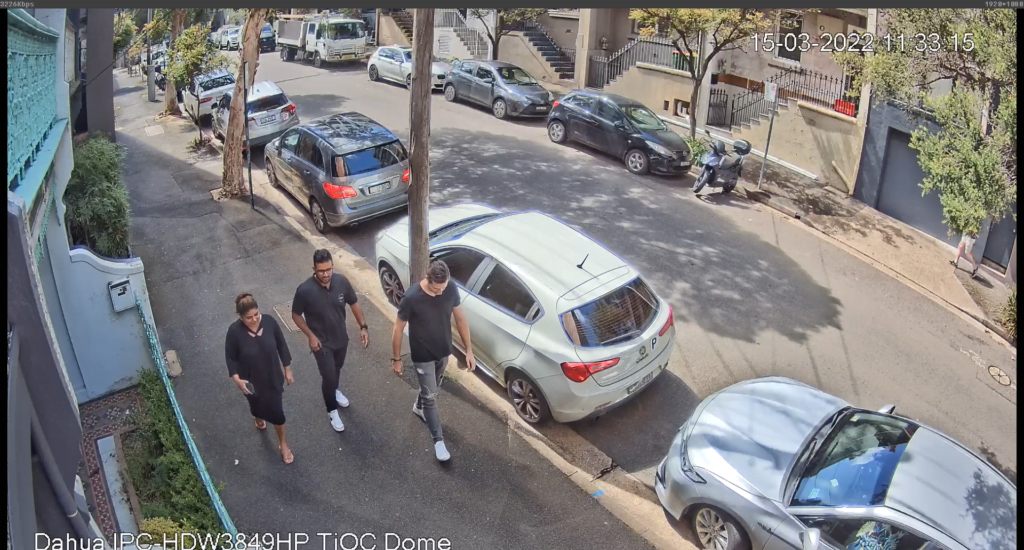
At the top of the street there are a couple of windscreens flaring and showing overexposure in the full sunshine. Face recognition in the presence of wide dynamic range is excellent out to about 16 metres, possibly a little further. There’s a lot of detail in this relatively low contrast scene. I say it repeatedly, but some cameras seem to channel the Axis camera engine, and this is one of them.
At this point I note I’m not getting moving fast number plates with certainty on the street at 15-20 metres with wide dynamic range activated and I can see some artefacts around moving vehicles – probably tone mapping. While I don’t have the plate, I have all other details. Just to get a feel for the difference I flip back and forth with WDR on and off to confirm my impressions.
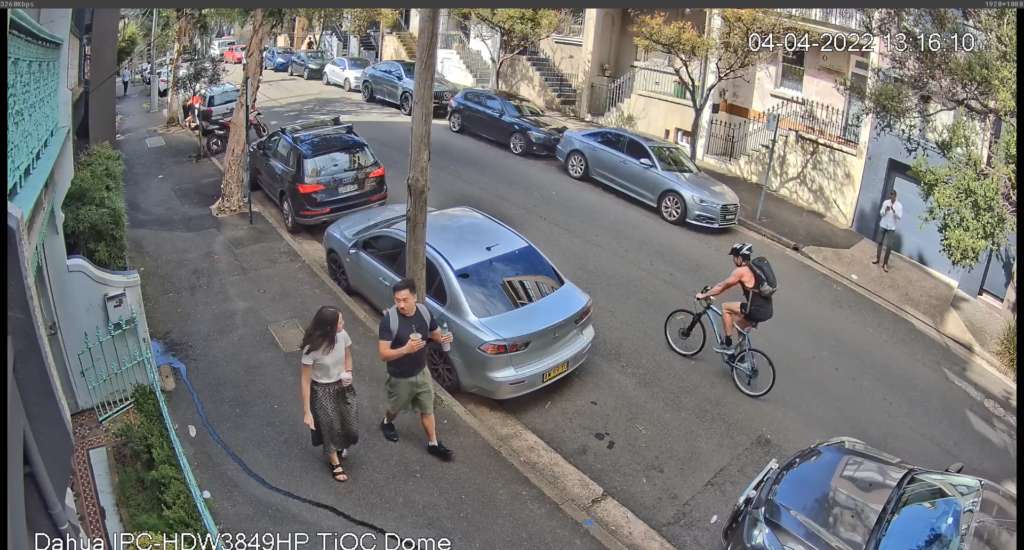
Just as I am sure WDR activation is impacting on plates, I manage to snap a fast-moving with plate WDR activated. With WDR off I get a full plate just past 20 metres and when I switch back, I nearly grab a plate on a moving vehicle at around 20 metres. Looking at the snapshot I can see the first 2 letters clearly, but am guessing the last 3.
As the morning unfolds, I leave WDR on – it’s giving me more situational awareness across the scene and I’m very pleased with the performance of the camera in that regard. It’s not the sharpest tool, but in these difficult conditions with very bright parts and deeply shaded areas, it’s performing very well. I have court admissible evidence and plenty of detail through to about 15 meters from the lens and worthwhile detail further in. The angle of view is considerable at around 105 degrees and I’m missing nothing in my scene and, inside the 15m mark, face recognition in the presence of backlight is not a challenge for this camera.
I find myself able to get scene story shots with multiple pedestrians and vehicles throughout the field of view. In almost every case, I have caught admissible details even at what I consider to be extreme range for a camera of this type – that’s around the 25-30m mark.
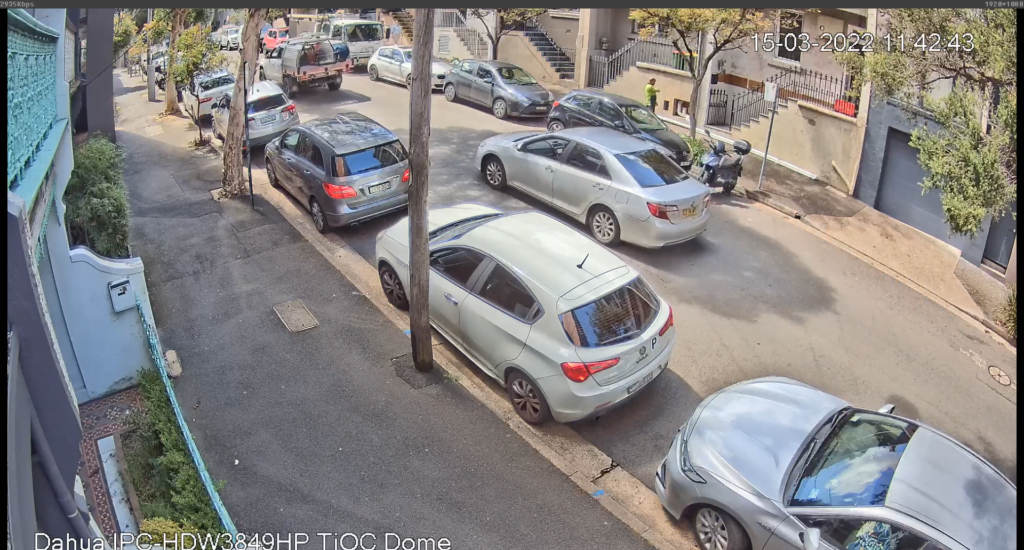
The camera does a good job with colour. Skin tones are accurate, there’s considerable detail from pedestrians – even in shaded areas – and with wide dynamic range activated I have shoe type, carried items, clothing, logos on shirts, details of smartphones, rips in clothing. There is sufficient detail to see footwear with accuracy that allows partial identification of individuals even if their upper bodies are not visible.
As the day goes along, the colour cast alters as the sun moves across the scene tending towards being warmer around midday. There are also periods of strong shadow, and the camera manages these well, giving good colour rendition. As light shifts in the afternoon there’s a little more noise in the image stream but it’s not intrusive, though later I notice some tone mapping around fast-moving vehicles.
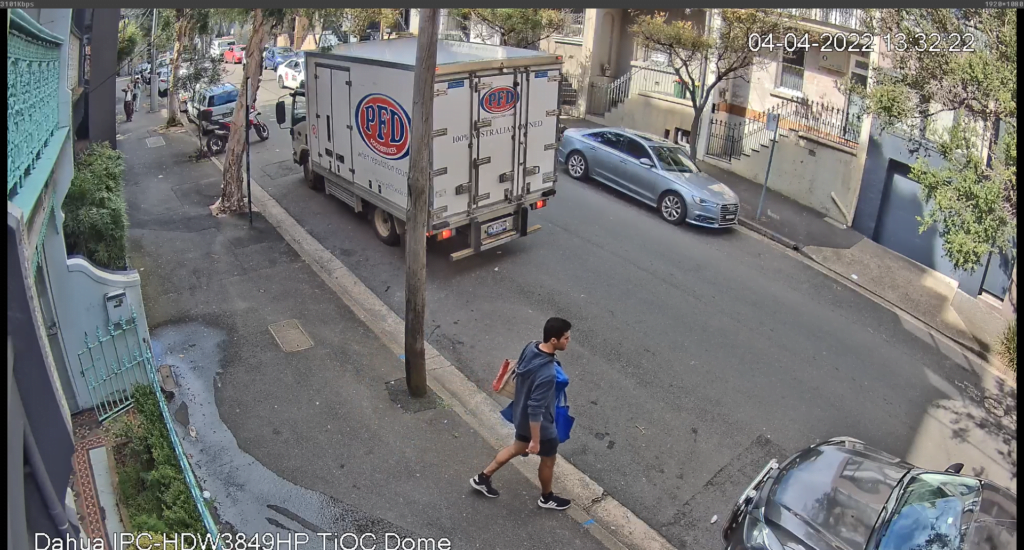
Later in the afternoon when the near side of the street is in deep shadow the camera manages to deliver high levels of detail in the dark areas without overexposing for the bright side of the street. At the same time, I notice I am still getting fast-moving plates at 20m, which I was not expecting. Meanwhile, face recognition in the sweet spot from say 6-12m remains excellent.
I am also able to reach deep into scenes to get extra information about individuals and vehicles well out towards 30m – shoe type, shorts versus trousers, shirt colour, hair style, skin tone, carried items like bags, the presence of gloves, as well as a strong sense of face recognition. As the light eases reflections in windows reduce and I get reasonably good identification of people in vehicles even to the point of seeing wristwatches and watch straps within 8m.
Later in the afternoon, when shadows from the towers completely cross the street and the sun is falling on buildings on the opposite side, I’m surprised to note that I have moving plates.
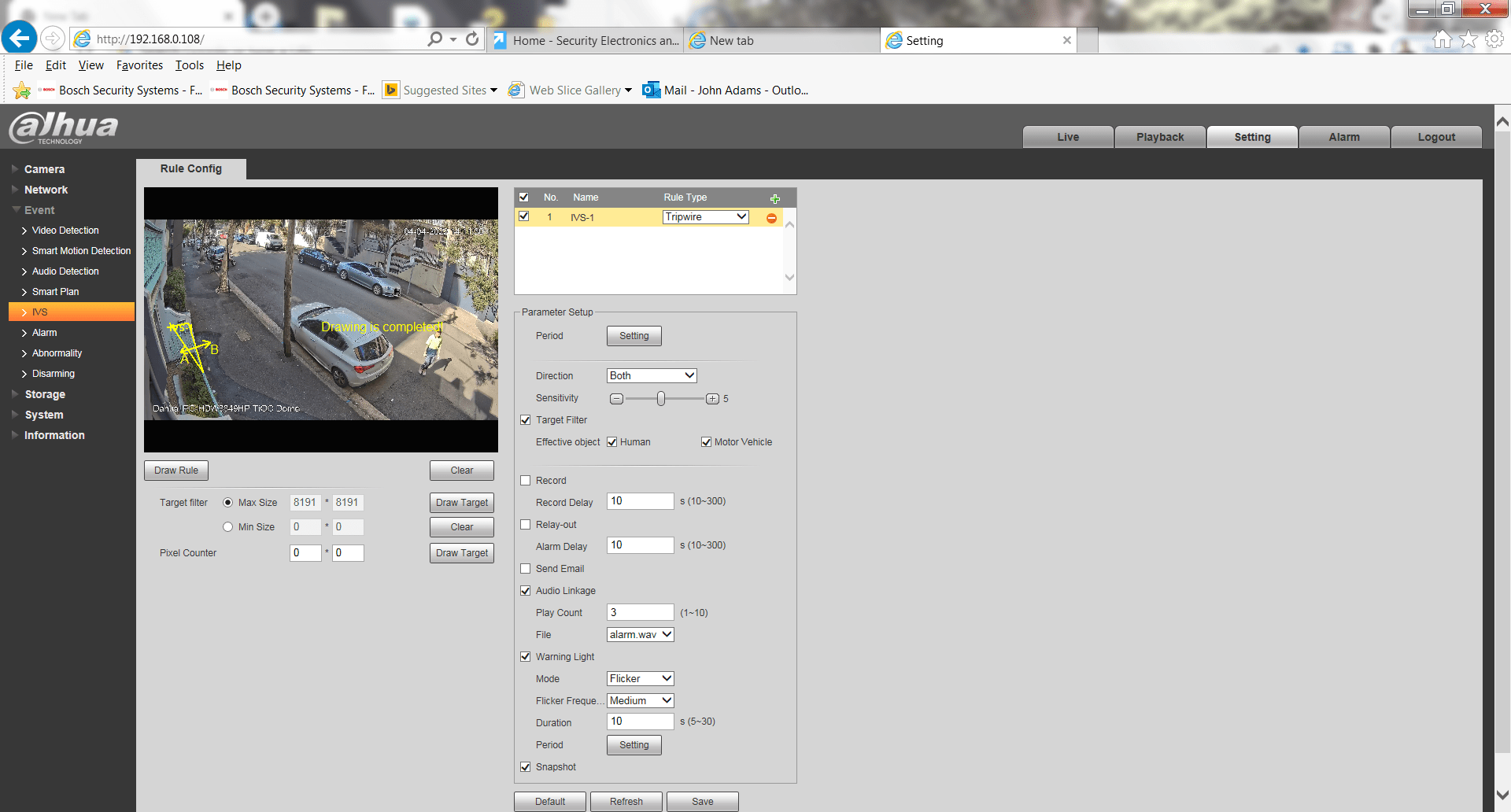
In the livestream it’s possible to see the LED strobes flickering during an alarm event.
In the late afternoon I set up a tripwire to cover the gate on a neighbouring property it’s a very simple line crossing type alarm. Using Dahua’s IVA rule configuration functionality in the camera browser it only takes a few seconds to draw my tripwire and I then wait for a neighbour to go through the gate while keeping an eye on the street as the afternoon goes on.
Colour cast changes again, heading towards orange at around 5.30pm and I notice shutter speed has slowed down. A motorcycle goes past nearly at right angles and motion blur is now a factor. It’s also having an impact on moving faces when they are at near right angles, but performance is better head on or from behind. And I still have high levels of detail when it comes to carried items and clothing.
There’s no problem identifying vehicles, but I don’t have number plates. At 6.20 I still have considerable detail despite the fact the scene is now growing dark as the evening goes along. The tendency towards motion blur increases but static performance is solid as you’d expect.
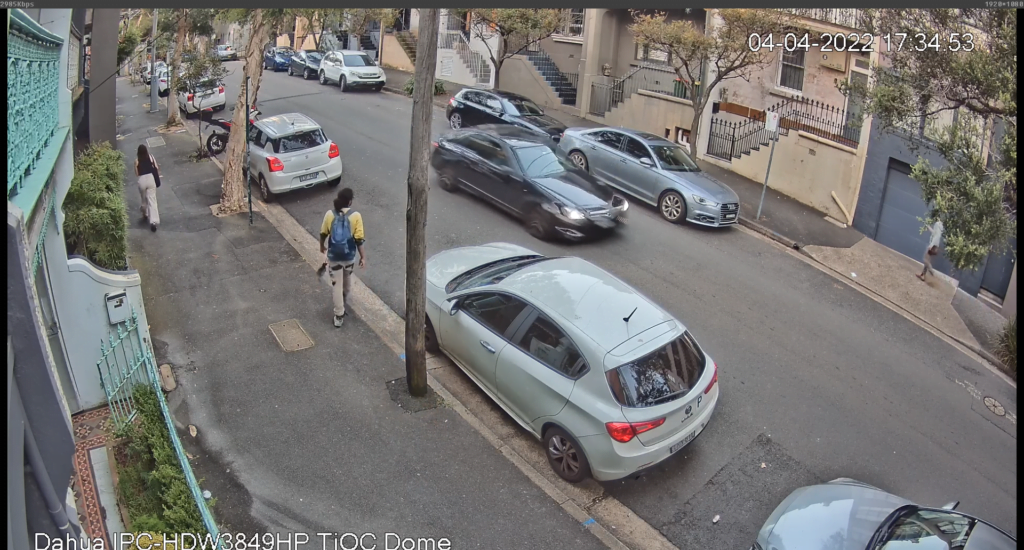
Not long after, the neighbours emerge through the gate and activate the tripwire, setting off the cameras flashing lights. I’ve deactivated the sirens so as not to create panic on the street. But looking through the monitor I can see the lights flashing and it’s at this point it would be possible to have an automated message that instructs an intruder they should leave the site and security has been advised of their presence.
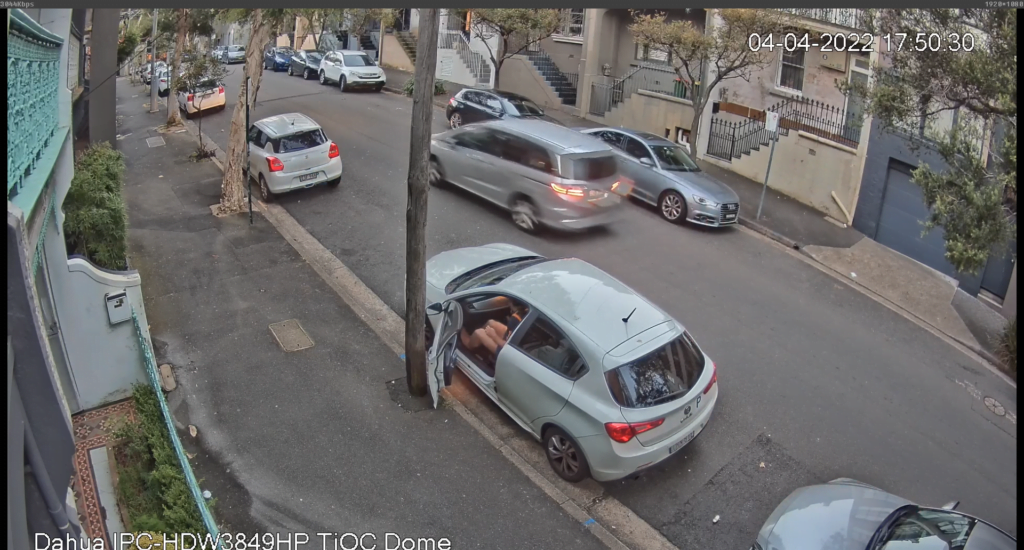
General camera performance continues to trend in the same way with slowing shutter speed impacting on the ability to secure consistent face recognition under 10 lux. At the same time, I’m retaining considerable situational awareness and colour rendition remains very strong. In line with this observation, I note that fast moving cars and now dragging a tail, but the depth of field remains strong – even out towards 40 metres where I can discern gender and details of attire.
In full dark around 6.30 with sub 2 lux at the lens, a large group of people walk by. In some cases, I can’t see any face detail but with others I have near recognition, thanks to a little ambient light from a doorway, as well as good general detail. At this point I decide to switch over into night mode but I’m not as happy with black and white performance and go back to colour where I have a much better sense of activity.
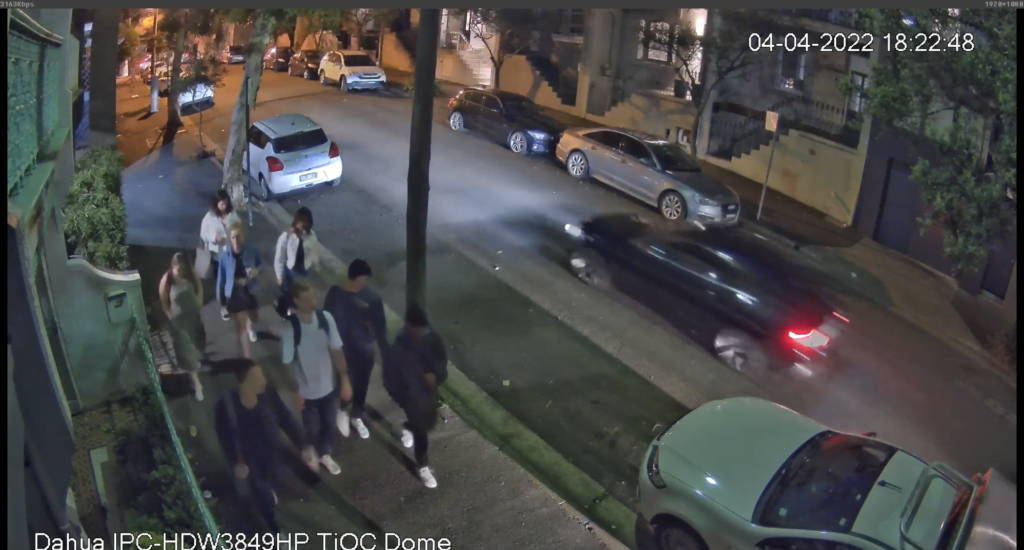
There’s some blooming and dome flare here – the softness is likely to be noise and noise suppression artefacts. Shutter is loafing.
My neighbours come back at this point and again they activate the flashing lights on the camera immediately they step through the gate, showing just how easy it is to set this camera up with an alarm rule that could drive an audio message or trigger a notification, or a siren with strobes.
Conclusion
Dahua 8MP TiOC turret camera is a flexible camera that performs well on the street and would do good work in SME applications that desire proactive response to events. Performance in my scene highlights the fact the camera would likely outperform its typical turret camera use case by a wide margin.
In the presence of strong backlight in complex streets scenes, depth of field is a strength, as is colour rendition and the ability to push through the challenges of strong backlight with WDR activated. I get court admissible faces between 12-to 16 metres in good light.
The camera is not super sharp, but it manages to serve up excellent depth of field day and night, for such a compact unit. While the lens may be contributing to sharpness, I’m running H.265 main profile – H.265 is processor hungry and has a way of softening an image stream.
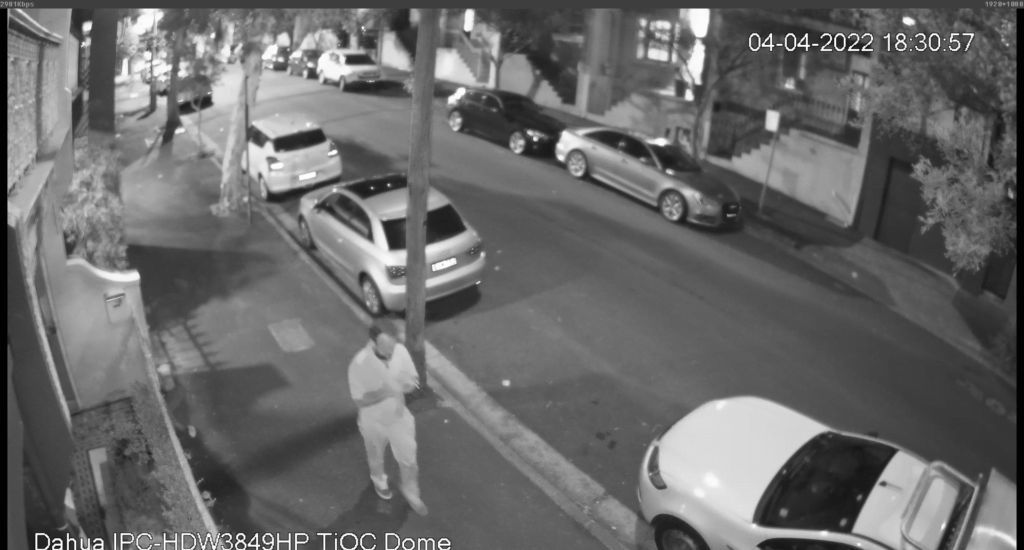
At the same time, this camera’s bitrate at 25ips and 4K resolution is another highlight – it’s around 12-1500Kbps during the day, peaking at 3300Kbps in sub 2 lux. This is good work from Dahua.
Moving plates are attainable in a range of lighting conditions that depend on vehicle speed and camera angle. Slower moving vehicle plates can be identified even in patchy light to 20m plus, which is good performance from a camera like this. Situational awareness is useful out past 60m in daylight and 40m at night in colour.
Importantly, the Dahua dome enhances these strengths thanks to its ability to generate instant alerts in support of IVA rules using an extremely user-friendly camera browser – or via Dahua CSS, making it ideal as a first line of defence in many applications.
More SEN news here



